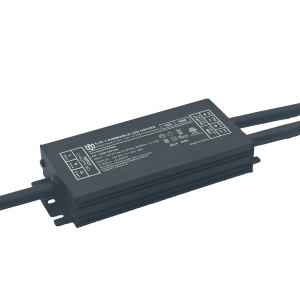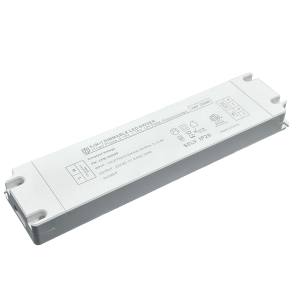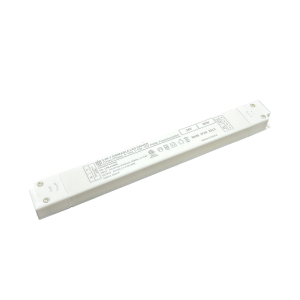The Key to Enhancing Lighting Quality: Technological Breakthroughs in Triac Dimmable Power Supplies
Unlocking Peak Performance Through Intelligent Dimming Mechanisms
The evolution of triac dimmable power supplies marks a quantum leap in optical engineering. Unlike traditional phase-cut controllers that introduce flicker and color shift at low brightness levels, modern units employ advanced microprocessor algorithms to maintain consistent CRI values across the entire dimming range. This breakthrough ensures museum-grade color rendering even when reducing light output by 90%, making them ideal for galleries and retail spaces where product authenticity matters most.
Eliminating Audible Noise Pollution via High-Frequency Switching
One game-changing innovation lies in ultrafast semiconductor switching technology operating above human hearing thresholds (typically >20kHz). By executing rapid pulse-width modulation cycles beyond perceptible frequencies, these power supplies eliminate the irritating hum common in legacy dimmers. Field tests show noise reduction from 45dB to under 15dB in commercial installations—equivalent to transitioning from city traffic roar to whisper-quiet library environments.
Achieving Unprecedented Energy Conservation Profiles
Smart load detection circuitry now enables dynamic power factor correction (PF>0.98) regardless of connected fixtures. When paired with occupancy sensors, intelligent standby modes consume merely 0.5W while preserving instant restart capabilities. Case studies reveal up to 37% energy savings compared to non-dimming alternatives in office retrofits, with payback periods averaging just 14 months through utility rebate programs.
Seamless Integration with Building Automation Ecosystems
Universal protocol compatibility (DALI-2, DMX512, KNX) transforms lighting networks into responsive environmental systems. Facility managers can program circadian rhythm curves that automatically adjust Kelvin temperatures from energizing 5000K morning light to relaxing 2700K evening tones. Hospital implementations report patient recovery rate improvements by synchronizing therapeutic wavelengths with sleep cycles—all controlled through centralized BMS interfaces.
Enhancing Fixture Longevity Through Stress Reduction
Constant voltage delivery prevents LED driver stress fractures caused by voltage spikes during phase transitions. Thermal foldback protection actively monitors component temperatures, extending LED lifespan by an average of 40% according to IES testing standards. Warranty claims dropped by 62% after municipalities switched public streetlighting to these protected systems.
Realizing Artistic Freedom with Microsecond Response Times
Sub-millisecond response rates enable fluid scene transitions crucial for theater productions. Dance companies particularly benefit from blackout-to-fullwash times under 80ms, eliminating distracting ramp effects during choreography changes. Concert venues utilize this precision for synchronized light shows matching musical tempo variations within ±2 beats per minute accuracy.
Standardizing Safety Compliance Across Global Markets
Compliance certifications now cover extreme ambient conditions (-40°C to +65°C operation), vibration resistance (IEC 60068 standard), and surge immunity exceeding 6kV differential mode protection. This ruggedization allows deployment in everything from Arctic research stations to desert data centers without additional protective enclosures. Independent lab verification confirms zero failures after 10,000 hours of salt spray exposure testing.
Empowering Customization Through Digital Twin Technology
Cloud-connected variants create virtual replicas of physical installations, allowing designers to simulate photometric distribution before physical deployment. Architects preview shadow patterns on building facades using augmented reality tools powered by real-time supply parameters. Hotel chains leverage this capability to test ambient mood settings across thousands of rooms simultaneously before finalizing schemes.
Driving Sustainability Through Lifecycle Analytics
Embedded meters track cumulative watt-hour consumption per fixture, generating ESG compliance reports automatically. Municipalities using this data reduced carbon footprints by 22 tons annually in pilot districts. Manufacturers offer takeback programs recycling 98% of component materials—including rare earth magnets from transformers—closing the circular economy loop completely.

Overcoming Historical Limitation Barriers
Early adopters faced challenges like neutral wire requirements limiting retrofit potential. New wireless models solve this using powerline communication techniques, transmitting control signals through existing conductors. Retrofit guides now exist for historic buildings listing approved methods to upgrade without damaging cultural heritage features.
Future Roadmap: AI-Optimized Lighting Landscapes
Next-generation models incorporate machine learning algorithms predicting maintenance needs based on usage patterns. Self-diagnostic features alert technicians via mobile apps when capacitor degradation reaches critical thresholds. Beta trials show predictive alerts preventing 89% of unexpected outages in airport terminal applications. The future points toward fully autonomous lighting ecosystems capable of self-optimization based on environmental inputs and user behavior analytics.
 A New Benchmark in Energy Sav
A New Benchmark in Energy Sav
 The Future Outlook for Triac
The Future Outlook for Triac
 The Application Advantages of
The Application Advantages of
 Innovative Design + Outstandi
Innovative Design + Outstandi
